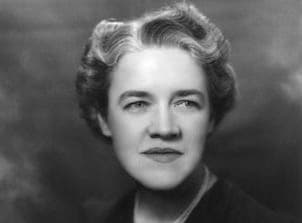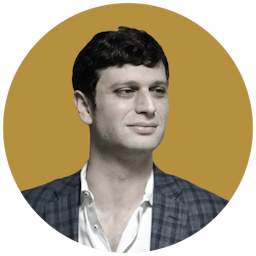Current Assault on Freedom of Speech ‘Worse Than McCarthyism,’ a Federal Judge Avers
Judge Silberman hopes for ‘a Democratic counterpart’ to Senator Margaret Chase Smith, who in her 1950 ‘Declaration of Conscience’ attacked McCarthy for his smear campaigns.

“Worse than McCarthyism” is how one of the most distinguished judges on the federal appeals bench describes the current chill around free speech.
The judge, Laurence Silberman of the District of Columbia Circuit Court of Appeals, is speaking of the alarm in the legal community that the next generation of lawyers will turn their backs on the very document to which they are sworn to vouchsafe — the United States Constitution.
A bedrock of American law and culture — the First Amendment prohibition against “abridging the freedom of speech, or of the press” — is now an increasingly tarnished ideal, one seen not as an absolute good but as a handmaiden to harm. A real-time shift in the values that undergird the law is under way.
Judge Laurence Silberman, now on senior status, tells The New York Sun that the assault on freedom of speech is not only “worse than McCarthyism” but reminiscent of the French Revolution, when radical imperatives came not from on high but from “the bottom” — peer pressure, coercive social and communal norms, and self-censorship.
Judge Silberman calls freedom of speech “the most fundamental American value” and its repression “un-American.” He confides to the Sun that many of his friends on the left agree in private that our legacy of free speech is under threat, even as they are reluctant to articulate the same stance in public.
In searching for a model for the present, Judge Silberman casts his gaze backwards, to a speech on the Senate floor from June 1950. A Senate Republican, Margaret Chase Smith, in an address that has come to be known as her “Declaration of Conscience,” attacked Senator McCarthy — who was sitting two rows behind her — for his smear campaigns.
Smith called for a return to “the right to independent thought” and decried the transformation of the Senate into a place of a “hate and character assassination.” Over lunch, President Truman reportedly told her that “your Declaration of Conscience was one of the finest things that has happened here in Washington in all my years in the Senate and the White House.”
Judge Silberman hopes that “a Democratic counterpart would play such a role today” and “make a case for free speech in the academy, corporations, and law firms.” Just as Smith stood up to her fellow Republican, McCarthy, so too do those on the left need to adopt a pugilistic posture toward those who seek to police this core freedom.
The jurist, though, despairs that there is “no one in sight,” even as the challenge to free speech during the reign of Joseph McCarthy was “peanuts compared to what it is today.” While black letter law only curbs government attempts to limit speech, the judge believes that the problem is not just one for lawyers and elites, but for everyone.
A legal analyst and founder of the popular website Above the Law and the Original Jurisdiction newsletter, David Lat, agrees. In an interview with the Sun, he worries that there is a “free speech problem at American law schools,” but also that he has detected “an epidemic of hostility to free speech” that extends beyond law school quads to the culture more broadly.
While the First Amendment has been a bedrock of the Constitution since its adoption in 1789, its shape has shifted over time. In 1907, Justice Oliver Wendell Holmes set forth the “clear and present danger” test. The case, Schenck v. United States, centered on the conviction of two socialists who had distributed to soldiers during World War I leaflets that suggested conscription was a form of servitude.
In consenting to the government’s regulation of these leaflets, Justice Holmes explained “the question in every case is whether the words used are used in such circumstances and are of such a nature as to create a clear and present danger that they will bring about the substantive evils that Congress has a right to prevent.” Free speech was not absolute, and during war the government’s right to regulate was strong.
This perspective held sway for decades. As the Supreme Court noted in Gitlow v. New York, “it is a fundamental principle, long established, that the freedom of speech and of the press which is secured by the Constitution does not confer an absolute right to speak or publish, without responsibility.”
In the intervening years, this “clear and present danger” test has given way to the “strict scrutiny” standard, whereby the government must show that there is a compelling interest in a narrowly tailored law. In practice, this means that it is difficult for the government to regulate speech’s content.
However, as Judge Silberman and Mr. Lat point out, this resolve appears to be crumbling. A director of Pen America, a free speech organization, told the New York Times: “There’s a crisis around the freedom of speech now because many people don’t understand it, they weren’t taught what it means and why it matters.”
A Harvard-CAPS poll disclosed that 64% of respondents view “cancel culture” as a “threat” to their freedom. A survey by the Cato Institute found that 62 percent of people have views they are afraid to disclose for fear they will cause offense.
There is, of course, no provision in the Constitution — in the First Amendment or elsewhere — enumerating a right to speak without giving offense. The culture, though, has become hostile to talk, however protected it may be, that offends. The result is that for many Americans, the constitutional guarantee of freedom of speech increasingly is honored more in the breach than in the observance.
Legal education, the place where constitutional values have traditionally been taught, appears uncertain on how to respond. Professors and administrators are caught between, on the one hand, the kind of deliberate, moderate, and methodical approach the study of law traditionally inculcates and, on the other hand, political and ideological forces that are especially alert to the “harm” that can result from unfettered speech.
A senior program officer, Aaron Terr, at the Foundation for Individual Rights in Education, known as FIRE, tells the Sun that there is “a free speech problem” not only at elite law schools but “up and down the U.S. News & World Report rankings.” He adds that this rise in censorship and “lack of appreciation for bedrock principles” is especially concerning at law schools because they serve as “pipelines to halls of power.”
This roiling crisis is gaining steam even though every practicing attorney is ostensibly bound by an oath to the Constitution. The American Bar Association explains that this “prerequisite of your license” is an “inviolable promise that you will always support and defend the Constitution in all situations.” This fealty, the ABA notes, is “above all, our most sacred promise.”
Not everyone agrees with this catechism. On the television show “The View,” a Harvard Law School graduate and justice correspondent for the Nation, Elie Mystal, insisted that the Constitution is “certainly not sacred” before explaining that he felt “the Constitution is kind of trash.”
Mr. Mystal explained that his dim view of America’s founding document was due to the Constitution having been “written by slavers and colonists and white people who were willing to make deals with slavers and colonists.”
The notion that the Constitution is fatally compromised by its past is shared by a Boston University professor, Ibram Kendi, who has proposed that “Americans should pass an anti-racist amendment to the U.S. Constitution that enshrines two guiding anti-racist principals: Racial inequity is evidence of racist policy and the different racial groups are equals.”
This view is increasingly being aired not by marginal dissidents but in classrooms and on sanctioned syllabi. Aaron Sibarium reports for Common Sense that Georgetown Law School will require all students to take a class “on the importance of questioning the law’s neutrality” and assessing its “differential effects on subordinated groups.”
At University of California-Hastings, what law professor Ilya Shapiro calls a “heckler’s veto” was employed to prevent him from addressing a group of students on campus. Mr. Shapiro has been put on leave by Georgetown University for comments critical of President Biden limiting his search to black women jurists to fill Justice Stephen Breyer’s Supreme Court seat.
Most recently, a bipartisan panel on civil liberties hosted by the Federalist Society at Yale Law School and featuring Kristen Waggoner, of the conservative Alliance Defending Freedom, and Monica Miller, of the progressive American Humanist Association, became embroiled in controversy.
As reported by the Washington Free Beacon, a discussion that focused on freedom of religion and speech across ideological differences was disrupted by 120 students angered by the conservative group’s presence. The protesters told the law professor monitoring the event, Kate Stith, that they wanted to “literally fight you, b—h.” In response, Mrs. Stith told them to “grow up.”
The police were eventually called as Mrs. Waggoner described how “it wasn’t safe to walk to lunch” due to student protests that “shocked” her with their vitriol. She told the Sun that she felt the student protesters wanted to “bully and intimidate her” and that the university’s response indicates that “mob rule is acceptable.”
The American Humanist Association tells the Sun that Ms. Miller stands by earlier comments made to the Washington Free Beacon. Those remarks implicitly criticized the disruptive protests by mentioning that “as lawyers, we have to put aside our differences and talk to opposing counsel.”
Yale Law School’s associate director for public affairs told the Sun that “as soon as the moderator read the University’s policy for the first time, the students exited the event,” and it went forward while also noting that “members of the Administration are nonetheless in serious conversation with students about our policies, expectations, and norms.”
Reflecting on this burgeoning list of events where freedom of speech has been subordinated to other values, Mr. Lat, the legal analyst, tells the Sun that a “galloping illiberalism” has left deans of law schools “cowed” when it comes to asserting the value of free expression and mum lest they find themselves tarred as “bigoted.”
With the scale of the challenge surfacing into the ken of even lawyers on the left, attention is shifting toward measures the legal profession can adopt to stem the tide, as evidence is mounting that exposure to the most sophisticated legal minds is proving no match for this rising tide of hostility.
Some prominent members of the legal community are pushing for more than just what Yale Law School called “conversations.”
Judge Silberman, in an email sent to every federal judge, has called for students involved in disruptions like the one at Yale to be barred from consideration for federal clerkships, a prize for those with their eyes set on prestigious legal careers. Judges, “who are presumably committed to free speech,” he writes, “should carefully consider” whether students who do not share those same values should help them craft the law.
Mr. Lat, the legal commentator, proffers two concrete suggestions to “alter the incentive structure” so that speech is prized rather than purged. The first is to mandate not only Diversity, Equity, and Inclusion training for all students and faculty, but also “free speech training.”
The second stems from his observation that many law school deans hanker to be university presidents. When they are interviewed for the top jobs, their resumes should be evaluated in part on how vigorous they defended freedom of speech. If they “caved,” Mr. Lat suggests, they should be disadvantaged.
For her part, Mrs. Waggoner, the conservative lawyer, tells the Sun that her experience has only stiffened her commitment to “being kind, gracious, winsome, and to speak the truth” and “deepened her resolve to show up” at places like Yale Law School.

